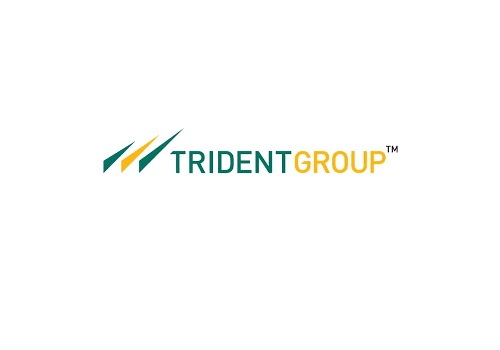Buy Cholamandalam Investment & Finance For Target Rs.735 - Emkay Global

Looking beyond near-term cost pressures; maintain Buy
* Chola Investments (CIFC) posted Q4 earnings of Rs6.9bn, up 32% qoq and 184% yoy. While reported earnings came in much above our estimates on provision write-backs, the operating profit missed our estimates by 5% due to higher-than-expected operating expenses. The key highlights are: 1) strong disbursement growth of 21% qoq, which resulted in AUM growth of 10% yoy; 2) increased contribution from the newly launched businesses; 3) stable NIMs qoq (excluding one-off interest write-off); 4) elevated operating expenses as the firm invested in new businesses and made up for under-investment during Covid years of FY20-21; AUM productivity levels per employee indicate majority of the new headcount additions were in the existing core business; and 5) improved asset-quality metrics reflected in Gross Stage-3 (GS3), stage 2 asset ratio and coverage ratio improvement.
* CIFC is a comprehensive financial services provider, offering vehicle finance, home loans (HL), loans against property (LAP) and SME loans, among others. Along with its investments in payment processing firms such as PaySwift and partnerships with fintech players, CIFC has launched new products like consumer loans and SME loans. It stands to benefit from the improvement in macro-economic prospects in FY23 and a pick-up in the capex cycle.
* We retain our Buy rating on the stock with a revised Mar’23 TP of Rs735 (earlier Rs760), using the excess return on equity (ERE) method for FY23-24E RoE of ~19.5%, which implies a multiple of 3.6xFY24E BVPS. We lower our cost of equity to 13.0% from 13.25%, based on a trailing 2-year adjusted beta, a 7.0% risk-free rate and a 5.25% market risk premium. Our estimates have been changed to reflect the revised outlook on operating expenses, growth and margin (see Exhibit 2). We also introduce our assumptions for the newly launched SME and consumer businesses (see Exhibit 17). While operating expenses are expected to remain elevated in the near term, we expect the new businesses to be RoA accretive in the medium term. Downside risk: operating expense ratios exceeding our estimates for the forecast period.
Q4 result highlights: Disbursements increased by 58%yoy/22% qoq, with vehicle finance contributing 50% of the incremental growth during the quarter and new businesses, on a low base, contributing ~41%. AUM growth was modest at 10%yoy/6%qoq, with new businesses forming 2% of the portfolio. Vehicle finance remains the core pillar of the portfolio, making up 69% of the portfolio, down from 73% in Q3FY22. Write-offs of Rs3.9bn impacted interest income by Rs0.6bn. Excluding this impact, NIMs were flat qoq/up 43bps yoy. CIFC continued headcount additions and has increased the incremental headcount during the last three quarters by net ~70% vs. Q3FY20 (pre-Covid). This was reflected in higher opex to avg. assets at 3.5% vs. the 2.5% average ratio since Q3FY20. Management commentary indicated that headcount additions for augmenting the collection team have reached the requisite operational levels. Investments in new businesses will, however, keep the cost-income ratios elevated in FY23.
Headline asset quality ratios, GS3 and stage 2 assets, improved to 4.37% (3Q:5.85%) and 7.61% (3Q:10.37%), respectively. As per the RBI's new IRACP clarifications, the GNPA and NNPA improved to 6.82% (3Q:8.53 %%) and 4.75% (3Q:5.59%), respectively. Management has indicated that the NNPA ratio would trend below the 4% watermark by 31st Sep 2022, the deadline for the implementation of new IRACP clarifications. The PCR on Stage 3 was 39.6% (3Q:38.8%). The overall ECL provision cover is at 3% (vs. pre-Covid levels of <2%), down from 4% in Q3. This was reflected in net credit cost write-backs of Rs174mn in Q4.
Update on new business segments: The three newly launched businesses are 1) consumer and small enterprise loans (CSEL), 2) SME loans, and 3) secured business and personal loans (SBPL).
1) For CSEL, which includes personal, professional and business loans, CIFC plans to focus more on professionals and businesses via traditional methods and partnerships (70%:30% mix). It has been launched in 50 locations and has already acquired over 0.13mn customers with a computed average ticket size of Rs44,200. This shall be expanded down the line to CIFC’s 275 hubs and 1,100 branches. CSEL currently accounts for 35% of the newly launched business portfolio
2) For SME loans, the three product lines are around supply-chain finance, term loans and equipment finance. Supply-chain finance is done in partnerships with Fintech and banks; disbursements are growing. This, however, does not support AUM growth due to a high churn rate. Term loans and equipment finance are secured businesses, where CIFC has tied-up with manufacturers and OEMs. Since it has got a better resale value and the recourse is available from OEMs, the focus will be on improving disbursements in the coming quarters. This will be the growth engine for SME loans. It is currently serviced out of 35 locations and accounts for 64% of the newly launched business portfolio.
3) For SBPL, the products are essentially secured business loans with self-occupied residential property or commercial cum residential property as collateral. It has been launched in 50 locations with the initial focus on the south and west markets. It accounts for only 2% of the newly launched business portfolio and is expected to grow at a very moderate pace.
Changes to our estimates: Considering the increasing influence of the new businesses on the balance sheet and P&L, we introduce our forecast assumptions for the individual businesses, adding up to the consolidated numbers (see Exhibit 14 to 18). We estimate an overall disbursement CAGR of 25% over FY22-25E, resulting in an AUM CAGR of 20%.The core vehicle finance portfolio is expected to grow at a CAGR of 18%, while affordable home loans and the newly launched SME/consumer businesses are expected to trend above average. We estimate the quarterly disbursement run rate of SME/consumer loans to increase from the current level of Rs15.4bn to Rs32.6bn by FY25 (below the potential runrate of Rs50bn expressed by management earlier). Considering the faster run-off of consumer loans, the newly launched businesses are expected to constitute ~8.5% of the FY25E portfolio. Vehicle finance portfolio is expected to be ~65% of the portfolio in FY25E (FY22:68%). Based on the AUM productivity level per employee, we estimate that bulk of the recent headcount additions have been to bring the core operating strength back to normalised levels. Taking into account the start of the rate hike cycle, we also pencil in an increase in the cost of funds (see Exhibit 17). The newly launched businesses are characterized by higherthan-average yields and credit costs. We estimate the FY25 PBT RoAUM to be ~3.9% for the newly launched business. With the cost ratios expected to trend down with scale, higher-thanexpected disbursements and asset mix changes favouring the higher yielding consumer loans offer upside potential for our estimated profitability ratios
Looking beyond near term cost pressures, maintain Buy: We retain our Buy rating on the stock with a revised Mar’23 TP of Rs735 (earlier Rs760), using the excess return on equity (ERE) method for FY23-24E RoE of ~19.5%, which implies a multiple of 3.6xFY24E BVPS. While operating expenses are expected to remain elevated in the near term, we expect the newly launched SME/consumer businesses to be RoA accretive in the medium term (beyond FY25). Downside risk: operating expense ratios exceeding our estimates for the forecast period.
To Read Complete Report & Disclaimer Click Here
For More Emkay Global Financial Services Ltd Disclaimer http://www.emkayglobal.com/Uploads/disclaimer.pdf & SEBI Registration number is INH000000354
Above views are of the author and not of the website kindly read disclaimer




















